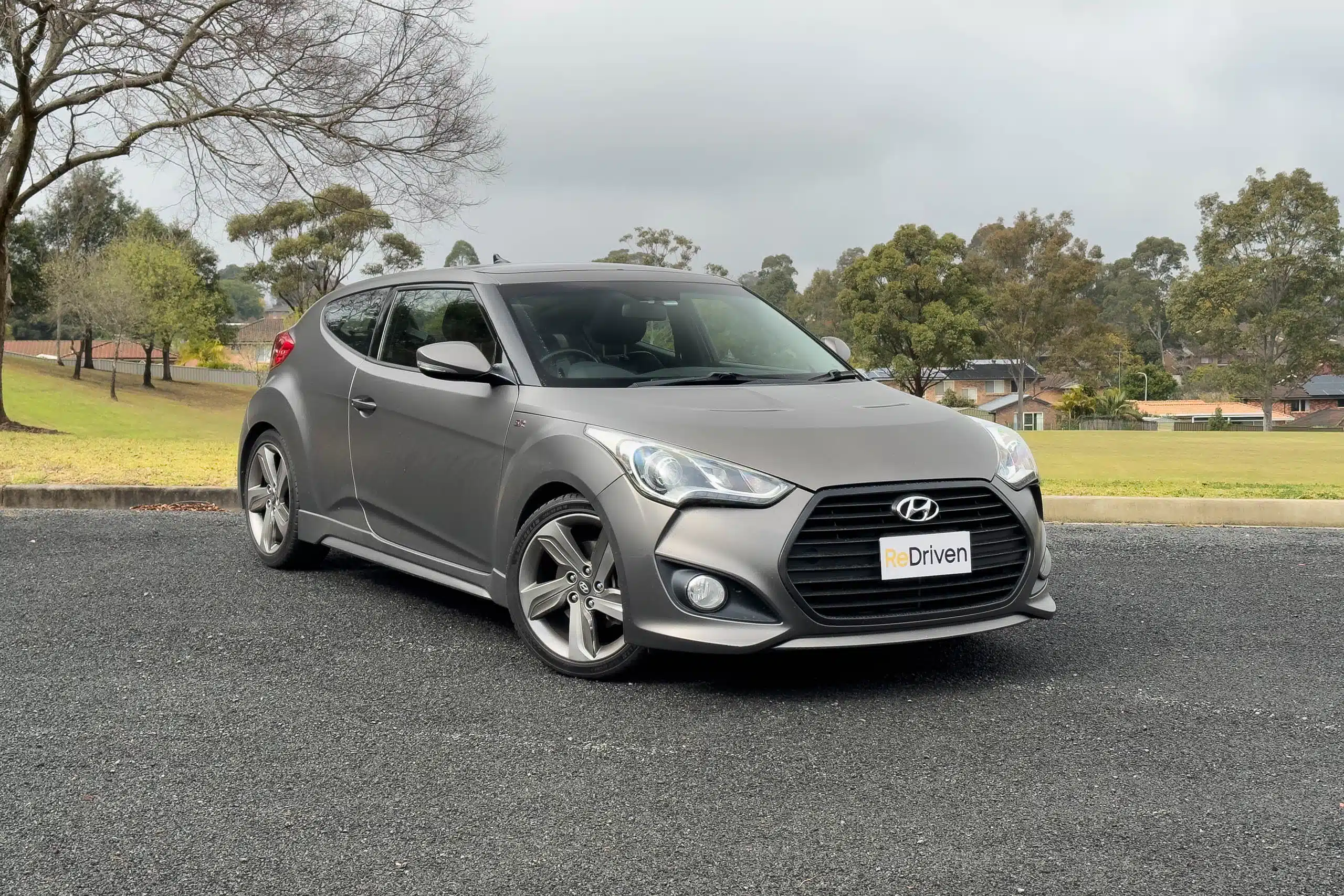Exterior:
The paint on the Veloster is not considered premium, and over time, it is prone to fading, particularly if it hasn’t been well-maintained. This is especially evident in Australia’s harsh climate. Many owners have voiced complaints about the paint chipping easily.
One of the most common faults with this model is the failure of the boot latch mechanism. To resolve this issue, owners often need to replace the entire unit to regain the ability to open the boot from the outside.
The effectiveness of the headlights tends to diminish as the vehicle ages, and they may also develop a yellowish tint.
There have been reports of the windows falling off their tracks, as well as the antenna detaching.
Owners have noted issues with the reverse camera, such as a fuzzy display and intermittent functionality.
The unique front bumpers are affixed with inexpensive clips that can break, leading to the bumper sagging.
An international recall was initiated due to sunroof-related problems. While it doesn’t lead to dramatic James Bond-style explosions, the sunroof can shatter unexpectedly. Ensure that any Veloster you’re considering has received the necessary recall repairs.
Users have reported problems with the sunroof mechanism, emphasizing the importance of maintaining clean drainage channels to prevent water leaks into the cabin. The Veloster’s interior is not particularly resilient to excess moisture. Signs of water damage may include deteriorating leather and wet carpets.
Interior:
The vehicle’s speakers are known to blow out relatively easily, requiring replacement. Unless you enjoy the sound of constant crackling with your music and podcasts, this is an issue to address.
The early touchscreen systems can experience glitches and ultimately fail. If you’re replacing the speakers, consider fitting a new screen at the same time.
Steering wheel couplers can deteriorate, rendering the buttons on the wheel non-functional. Many owners have also reported an annoying clicking sound and sensation while turning the wheel. This may be attributed to a small rubber bushing deep in the steering column that may go bad. While the part itself is not expensive, replacing it can be a labor-intensive task or require a significant amount of labor costs.
Numerous owners have raised concerns about rattles within the vehicle, ranging from minor annoyances to peculiar issues like the passenger seat shuddering at specific speeds.
The A/C knob has been known to overheat, melting the controls responsible for interior temperature regulation. This is more pronounced when using fan speed 4 or the maximum setting. It is suggested either to avoid using fan speed 4 or to have the entire system repaired.
Unfortunately, the HVAC system has its fair share of complaints, with problems ranging from minor annoyances to more severe issues, affecting the overall comfort of the vehicle.
Mechanically:
The Veloster uses a 1.6-litre Gamma family of engines, which has a somewhat better reputation than the problematic 1.8, 2.0, and 2.4-liter Theta platform engines.
Some early 1.6-litre Gamma engines were prone to bottom-end failures, primarily involving connecting rod bearings, leading to recalls to address these problems.
Premature timing chain failures have been reported; a rattle during startup is a common sign of this issue.
Carbon build-up on valves and inlet clogs can occur in higher mileage engines, affecting performance and fuel economy; remediation options include chemical cleaning or walnut blasting.
Valve cover oil leaks are a common occurrence, often appearing after surpassing the 100,000 km mark. While not overly costly to repair, it is a recurring problem.
Rear main oil seals are prone to leakage, necessitating the removal of the transmission for repair, which can be a more expensive endeavor.
Due to their propensity for oil consumption, rigorous servicing at 10,000 km intervals from the start is imperative.
Manual transmissions are considered the more reliable option, providing a smoother and less problematic driving experience.
Dual Clutch Transmissions (DCT) in Velosters have had a history of complications with clutch actuators and selector issues, which can result in costly repair work.
When considering the purchase of a Veloster, it is advisable to avoid vehicles that have been modified, as such changes can introduce unforeseen issues.
Ensuring that the car has been diligently serviced throughout its lifespan is crucial to mitigate potential engine and transmission problems. A flawless service history is highly desirable.
Recalls:
- January 2013 – Hyundai Veloster 2011-2012’s panoramic sunroof glass may fracture unexpectedly, affecting 883 units and posing a laceration hazard.
- August 2019 – The software on the ECU may cause premature ignition leading to engine stalling and possible fire in 5,171 units of 2012-2013 Veloster.
- July 2023 – Hyundai Veloster (FS) 2015~2016MY and Tucson (TL) 2017MY engines may exhibit abnormal noise, potentially seize, and cause a loss of motive power or vehicle fire, affecting 13,548 units.

















































